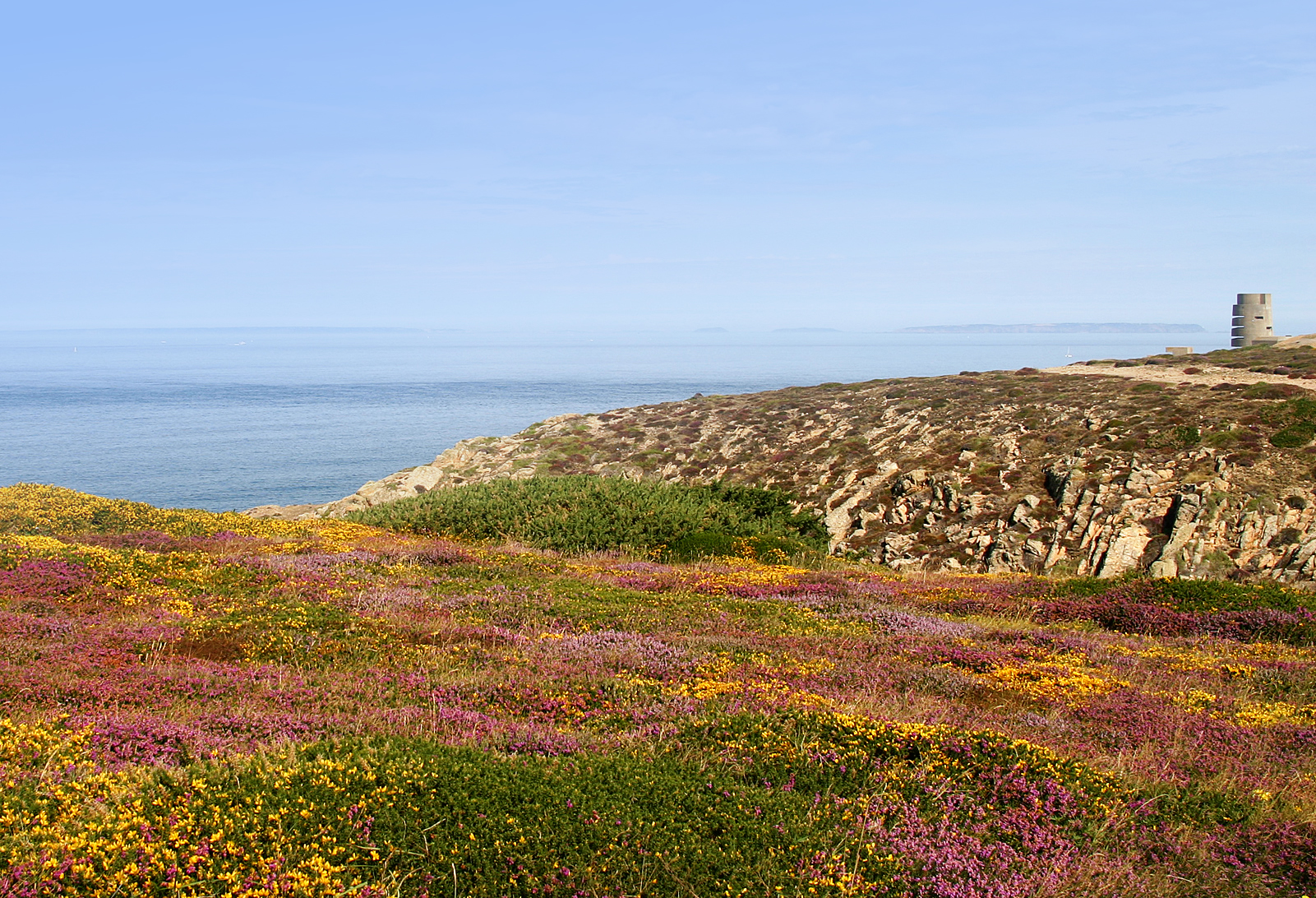By Glyn Young for Jersey Invasive Species Week 2022
I cannot remember not being interested in (ok, obsessed with) the world’s birds. I’ve long wanted to see as many as I can, wherever I can. I’ve been very lucky in that I’ve been able to get close to birds as a profession too. In fact, my profession has changed my involvement with birds from simply watching them to wanting to save them from dying out, to help the rarest of the rare from becoming extinct. Working at Durrell has involved me with some serious problems and three times I’ve worked with birds considered the rarest on earth. That they aren’t the rarest now is not because they died out but because Durrell and its partners succeeded in getting them through the crisis. They are still rare but there is hope.
At Durrell, we typically become involved with a species when it is already very rare and it is considered that our involvement can help it turn the corner. Planning a recovery project requires us to look at three key things: pressure, state and response. That is, why is our bird so rare and what are the drivers of its decline? How many are there and exactly where do they live? And then, what can we do to change the future for the species? However, while we need to map our species’ current distribution, count how many there are and then determine what we can do for them and who we will work with, we generally have a pretty good idea what is making them so rare.
We think of habitat loss and conversion, of hunting and persecution as drivers of bird decline. But inevitably, invasive alien species (IAS) are going to be in there somewhere. So many of the world’s animals and plants are now being pushed towards extinction by alien species, the ones we call invasives or often, quite correctly, exotic species. All species that are not native and have come from somewhere else, introduced either deliberately or accidentally, are exotic, whereas only those that have a negative impact on native species by outcompeting with them or directly killing them or their eggs and young are called invasive species. The trouble is, it’s often very hard to tell whether an exotic species is harmless or whether you just haven’t looked closely enough (ruddy ducks in the UK were once considered a benign introduction and we know what happened with them).
 At Durrell, my work has been to look at the pressures on and the state of a bird population and then use the findings towards establishing the responses. The first bits we might lead on, but the responses are more likely to involve a wider group, partners with their own particular skills like Island Conservation. Increasingly, where the role of one or more invasive species is key to our bird’s situation, we will work with partners who may be directly involved with reduction, or hopefully total eradication, of the invasive threat. If our bird lives on a small island, threatened by rats, or cats or a whole host of other invasives, its best chance of survival will be the complete removal of all the invasives. And here, Durrell may work to ensure the survival of the native species while its habitat is made safe by our partners. This is where we’ve been involved in recent years in the Galápagos.
At Durrell, my work has been to look at the pressures on and the state of a bird population and then use the findings towards establishing the responses. The first bits we might lead on, but the responses are more likely to involve a wider group, partners with their own particular skills like Island Conservation. Increasingly, where the role of one or more invasive species is key to our bird’s situation, we will work with partners who may be directly involved with reduction, or hopefully total eradication, of the invasive threat. If our bird lives on a small island, threatened by rats, or cats or a whole host of other invasives, its best chance of survival will be the complete removal of all the invasives. And here, Durrell may work to ensure the survival of the native species while its habitat is made safe by our partners. This is where we’ve been involved in recent years in the Galápagos.
I first cut my teeth in Mauritius in the 1980s where I joined our small team on the island working with birds on the very edge of extinction. My tasks were in observing and recording nesting echo parakeets (less than 20 birds in the world) and taking young into captivity. This was the first known nest in many years. I also made notes on pink pigeons and Mauritius kestrels, two further species with wild populations of under 20. Although a dire history of habitat loss, hunting and pesticide use had pushed these birds into ever smaller areas of forest it was the non-native rats, cats, mongooses, monkeys, mynahs and dense thickets of privet and guava in the forest remnants that would finish the job. Today, these birds can be found in much healthier numbers through some serious hard work and the establishment of captive populations. I also made trips out to Round Island shortly after the removal of goats and rabbits, animals put out there as food for ships and responsible for the near extinction of several reptiles and plant species extinct on the main island, and the last populations in the country of several seabirds. The mammals went in the nick of time and the saved reptiles and plants have gone on to repopulate other recovered islets.
From Mauritius, in 1989, I searched a lake system in Madagascar for Madagascar pochard. This lake, Alaotra, was the only known site of the duck which, although formerly widespread, had been considered common here only a few years before. But that was before a whole series of exotic fish were released into the lake. Fish that went on to see the loss of many native species as they out-competed many and disastrously altered the habitat needed for many others. We couldn’t find the previously common pochard or find any hope of its survival and declared it ‘probably extinct’ in 2004 despite constant effort. To say that I was excited on its rediscovery in 2006 would be an understatement!
 Changing emphasis to Madagascar’s west coast in 1992 I began to focus on the Madagascar teal. Even this mangrove specialist faced threats from rats and cats – we found cat tracks in mangrove islands cut off at high tide. Through this work I was sponsored by New Zealand’s Department of Conservation (DOC) to visit many of their bird restoration projects in 1996. New Zealand has a long and awful history of invasive species and so each programme included work with invasives – some expected like brown teal (rats, cats, stoats etc), some more specialised like blue duck (rainbow trout) and some much less obvious like black stilt (lupins). Who would have guessed that lupins could be such a threat!
Changing emphasis to Madagascar’s west coast in 1992 I began to focus on the Madagascar teal. Even this mangrove specialist faced threats from rats and cats – we found cat tracks in mangrove islands cut off at high tide. Through this work I was sponsored by New Zealand’s Department of Conservation (DOC) to visit many of their bird restoration projects in 1996. New Zealand has a long and awful history of invasive species and so each programme included work with invasives – some expected like brown teal (rats, cats, stoats etc), some more specialised like blue duck (rainbow trout) and some much less obvious like black stilt (lupins). Who would have guessed that lupins could be such a threat!
I was quickly on the scene when around 20 wild Madagascar pochards were found in a distant, fish-free, mountain lake in 2006. With little hope of long term survival, with partners including Wildfowl & Wetlands Trust we collected eggs in 2009 to start a captive population in Madagascar. The Durrell run breeding centres have bred many ducks and we began to return birds to another lake in 2018, a lake that they’ve been breeding at ever since.
 In 2006 I also spent time surveying the remnant population of Saint Lucia’s white-breasted thrasher. A species that had also been considered extinct in the past until found in areas of eastern dry forest earmarked for development. While the final straw for this species might have been the development, it was the introduction of mongooses that had pushed it towards oblivion. The mongooses had done a good job on a lot of other native animals too.
In 2006 I also spent time surveying the remnant population of Saint Lucia’s white-breasted thrasher. A species that had also been considered extinct in the past until found in areas of eastern dry forest earmarked for development. While the final straw for this species might have been the development, it was the introduction of mongooses that had pushed it towards oblivion. The mongooses had done a good job on a lot of other native animals too.
The year before, in 2005, I began working in Isabela in the Galápagos. Durrell had been invited to look at the mangrove finch, the rarest bird in the islands and one that had not been recorded breeding in several years. The entire population of this finch, well under 100 birds, was living in a couple of tiny mangrove patches. Mangroves full of rats which we quickly proved were eating the eggs. The rats were removed, and the finches bred again. Our excitement was, however, short-lived as another invasive species, the parasitic vampire fly took over and killed chicks that the rats had previously prevented from ever hatching. No one has yet stopped the flies but they are working on control methods. In the meantime, other agencies in the Galápagos have taken on our work and the mangrove finch is still there. Isabela is a very big island and despite an incredible effort to remove a large and destructive population of goats, rats can only be kept out of the mangroves and survive elsewhere on the island.
In 2007 I was asked by the Galápagos authorities to look at the Floreana mockingbird. This incredible bird was the inspiration behind Charles Darwin’s theory of evolution by natural selection. However, since Darwin met the mockingbirds on Floreana, the population had died out through loss of natural vegetation, eaten by cattle, goats and donkeys and predation of nests by rats and of adults by cats. The loss was not complete though as a few mockingbirds remained on two tiny islets. The challenge, to get them back safely on to the main island. We took on the challenge but, despite some great plans and plenty of research, only the complete removal of Floreana’s unwelcome mammals would allow the return. And that’s where we are right now, the removal is scheduled although it was delayed by the pandemic. Durrell has taken on safeguarding Floreana’s many native finch populations to make sure that they aren’t caught up in the rodent and cat programmes. We have two aviary complexes ready on the island and have trialled catching large numbers of finches, holding them in the aviaries, releasing them and tracking them later. All bodes well for Floreana, the mockingbird and other native animals and plants. Later in 2022 we will start drawing up plans for the return of 13 missing animal species.
So, that’s work. What about free time? Well, it’s surprising how the two can meet and it’s lucky that I have a family happy to go along. And that they like seeing wild bird populations (often puffins it seems) and learning what it takes to ensure that these will survive. We don’t dislike rats, cats, mongooses, cichlid fishes and lupins etc but we know we need to keep them away from the birds.






























































